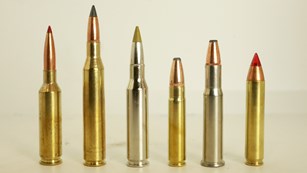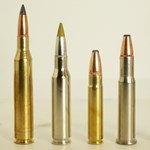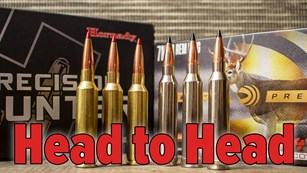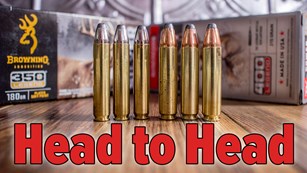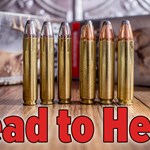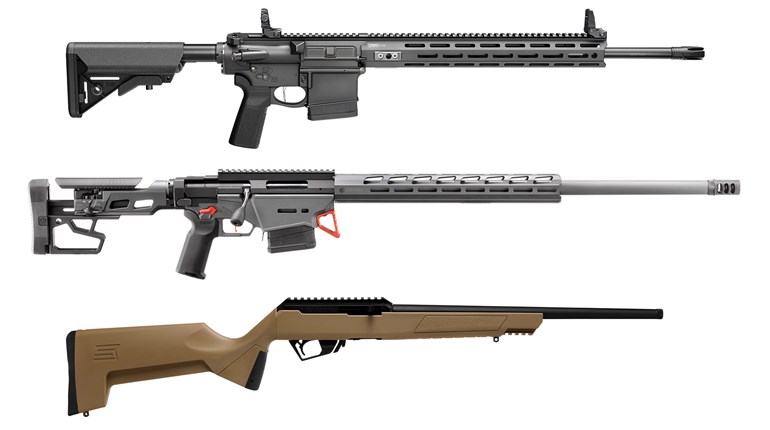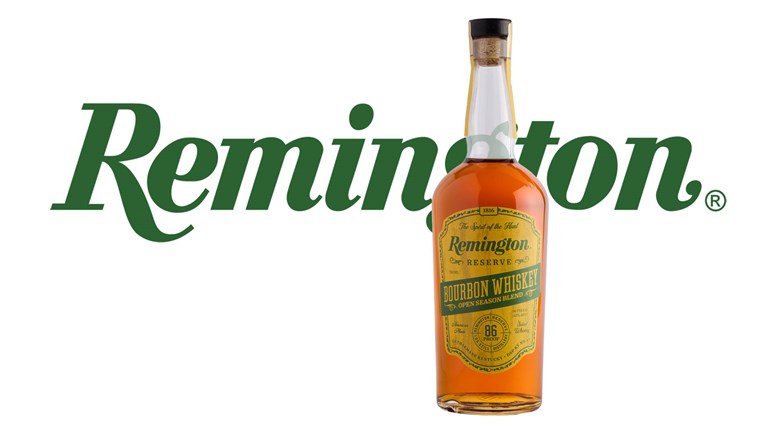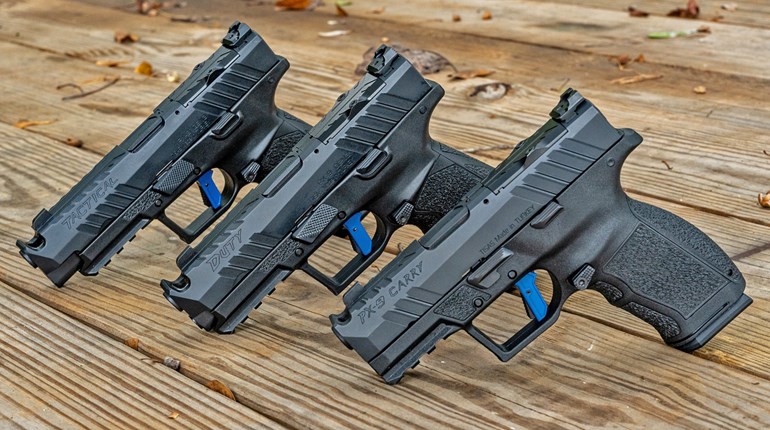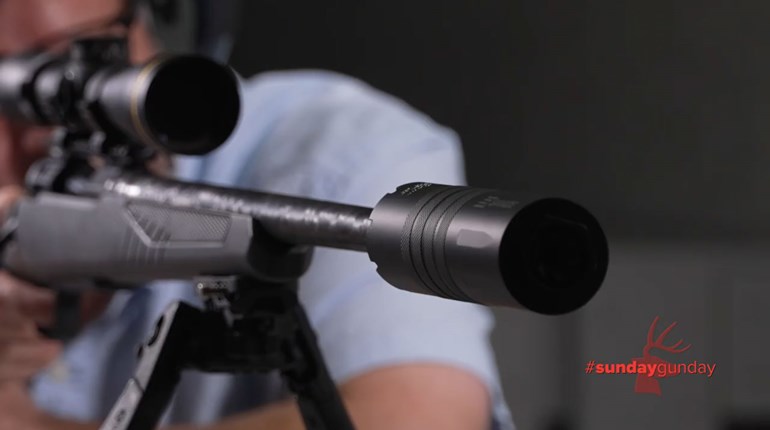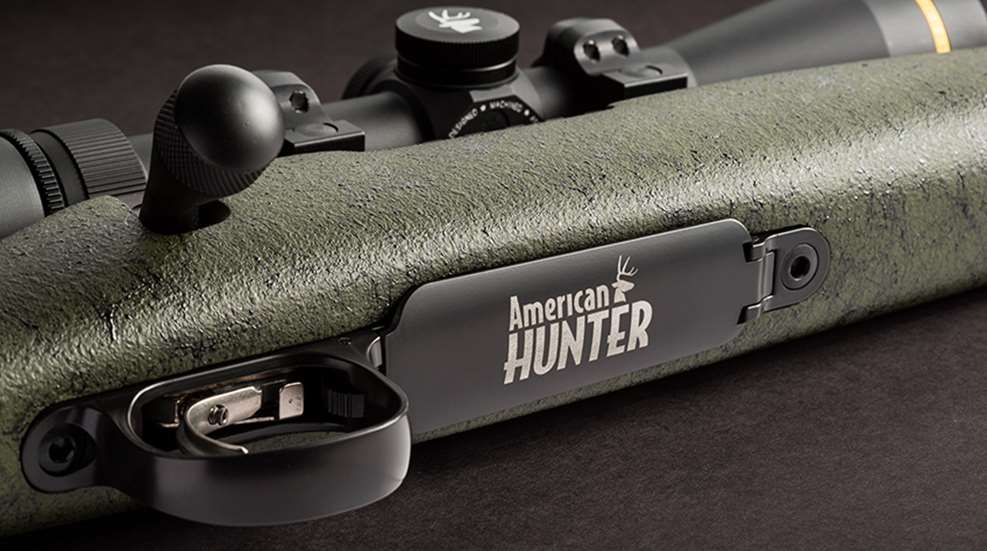
Spend enough time carrying rifles around the woods, and you’ll develop preferences for certain features on some and disgust for characteristics of others. You’ll come to form a notion of what the ideal hunting rifle should be, even though it may exist only in your mind. The Remington Model 700 American Hunter represents such desires based on nearly 140 years of cumulative hunting experience among this magazine’s staff. It’s more than just a tangible compilation of our tastes in rifles, however. It’s a rifle built for hunters, by hunters.

Developing the Model 700 American Hunter took more than a year. We partnered with Remington and based the rifle on the Model 700 because arguably it’s the most popular bolt-action hunting rifle in the United States, perhaps the world, and because it’s been serving hunters admirably since 1962. American hunters know it, trust it, love it.
But even something as stalwart as the Model 700 can be improved, particularly in these days of computer-controlled manufacturing techniques that make custom-grade refinements possible at production-level costs. Remington recently invested in new machinery and processes that allow the company to make Model 700 parts with more precision, holding tolerances that approach those of custom rifles. The American Hunter rifle benefits from this improved manufacturing system.
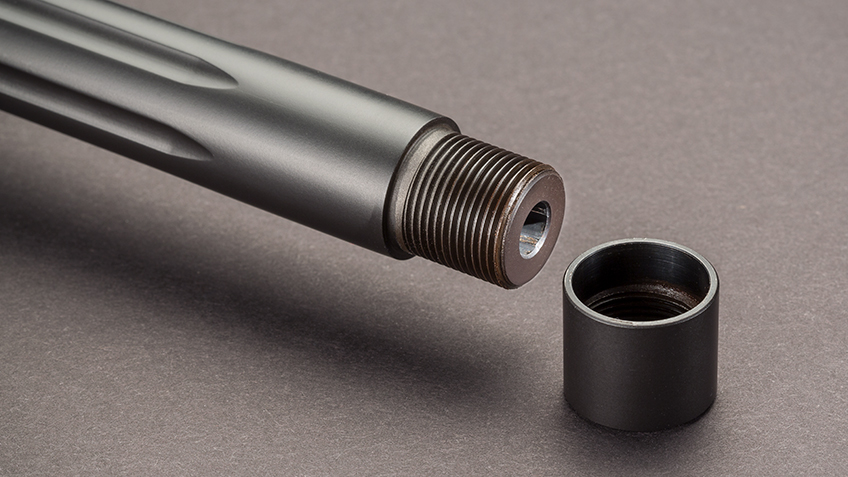
For example, the receiver’s face, lug recesses and threads that accept the barrel are all held to custom-level tolerances. To build on that precision, additional machining trues and smooths the rear faces of the bolt’s twin locking lugs to ensure an exact fit with their recesses in the receiver. Truing the lugs to their recesses is a step custom builders typically take to blueprint an action for enhanced accuracy and function. Remington also tweaked the angle on the bolt that initiates primary extraction to provide more force in withdrawing a case or cartridge from the chamber. In addition, the holes in the top of the receiver for mounting optic bases are drilled and tapped for stronger, more robust 8-40 screws instead of the standard 6-48 pattern.
The cold-hammer-forged barrel has 5R rifling, which places grooves opposite lands around the bore, instead of lands opposing each other. The design lessens bullet deformation as the projectile travels through the bore, promoting accuracy and decreasing fouling. Another advantage to 5R rifling is the corners between the lands and grooves aren’t as sharp as in conventional rifling, which also minimizes the accumulation of fouling and eases cleaning. Remington employs a set of processes similar to those used for the U.S. Army’s M24 when machining the American Hunter rifle’s barrel. Multiple operations occur on the same tool to eliminate tolerance stacking; variations can be tightly controlled across a number of machining steps because one tool performs all of them. The result, in terms hunters who are not engineers can understand, is a bore that’s centered in the barrel and aligned with the center of the receiver. Precise alignment of the bore and receiver is optimum since a scope centers over the receiver.

How well a rifle handles is just as important to hunters as how well it shoots. Long-range, match-style rifles may shoot half-inch groups, but not many hunters enjoy carrying a 12-pound gun all day or maneuvering a 4-plus-foot rig inside the confines of a blind. The American Hunter rifle’s 20-inch fluted barrel makes it quick and handy, but the heavier contour prevents the gun from becoming whippy. Add a suppressor to the threaded muzzle, and the barrel length makes even more sense.
The 20-inch barrel is also a good match for the rifle’s 6.5 Creedmoor chambering. The 6.5 Creedmoor is a supremely efficient cartridge, and a barrel that’s a bit shorter than the standard 22-24 inches does not adversely affect muzzle velocity. With three factory hunting loads, muzzle velocities from the American Hunter rifle averaged just 65 fps slower than from 22-inch-barreled rifles. This minimal loss in velocity is a non-issue at typical hunting ranges and even out to as far as 500 yards.

The rifle’s Bell and Carlson stock—constructed by the hand lay-up process from a composite that includes fiberglass, aramid fiber and graphite—plays a role in handling as well as accuracy. It helps keep the weight of the rifle less than 7 pounds, and the open curve of its grip makes the rifle responsive for quick offhand shooting. The height of the comb and the cheekpiece make eye-to-scope alignment feel natural. A Pachmayr Decelerator recoil pad reduces the mild recoil of the 6.5 Creedmoor to a level most hunters can tolerate over hours of practice.
The stock’s aluminum bedding block presents a stable and consistent interface for the barreled action. Being a composite, the stock is weatherproof and not as susceptible to dents and scrapes as wood and polymer. And there’s no need to worry about rain or snow harming the barreled action: It’s finished in matte-black Cerakote. This is a rifle that will hunt over all types of terrain no matter the elements.
Since hunters often wear gloves and sometimes need to make quick follow-up shots, the bolt handle has an enlarged knob to aid cycling. The knob’s size makes it easy for the hand to find and promotes a solid grasp.
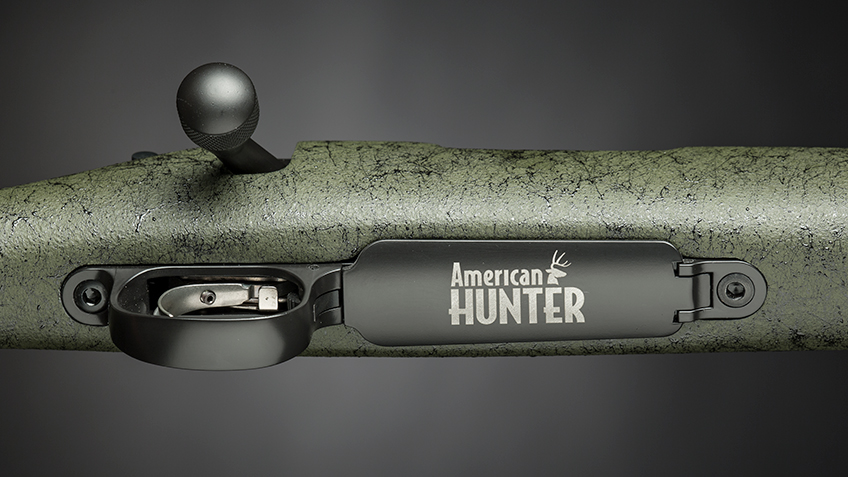
Two more things tie the Model 700 American Hunter, which is currently limited to a production run of 1,500 units, to this magazine. They’re purely for aesthetics, but they’re distinctive touches. The American Hunter nameplate is engraved on the hinged floorplate. In addition, the rifle has a special serial number range with a “19AH” prefix, representing the year of production and the abbreviation of this publication’s title.
The Remington Model 700 American Hunter is a rifle we’re proud to present to our readers. We think you’ll be proud to hunt with it, too.

Technical Specifications
• Type: bolt-action centerfire rifle
• Caliber: 6.5 Creedmoor
• Barrel: 20″; cold-hammer-forged, chrome-moly steel; 5R rifling, 5 grooves, 1:8″ RH twist; heavy contour w/fluting; ⅝x24 threaded muzzle w/cap
• Magazine: internal box w/hinged American Hunter engraved floorplate; 4-rnd. capacity
• Trigger: single-stage, adjustable X Mark Pro; 3.5-lb. pull weight
• Safety: two-position toggle
• Sights: none; Leupold Mark 4 bases installed
• Stock: Bell and Carlson composite w/cheekpiece, aluminum bedding block; LOP 13.63″
• Metal Finish: black Cerakote, jeweled bolt w/black oxide
• Overall Length: 39.38″
• Weight: 6.9 lbs.
• MSRP: $1,349; remington.com




